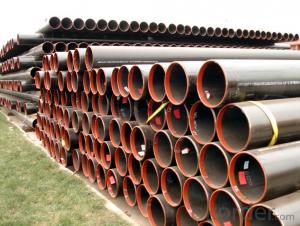Concrete and rebar are two materials that have been used together for decades in the construction industry. They are a perfect pair for strength, providing a combination of durability, flexibility, and resilience. Let’s explore the unique relationship between these two materials and how they contribute to the success of modern construction projects.
The Dynamic Duo of Construction
Concrete and rebar are often referred to as the ‘dynamic duo’ of construction. This is because they complement each other perfectly in terms of their properties. Concrete is strong in compression, meaning it can handle heavy loads without breaking. However, it is weak in tension, which means it can crack or break when pulled apart. Rebar, on the other hand, is excellent in tension. It can withstand significant pulling forces without breaking. When rebar is embedded in concrete, it creates a composite material that is strong in both compression and tension. This makes it ideal for building structures that need to withstand a variety of forces, such as bridges, high-rise buildings, and dams.
The Birth of a Partnership
The partnership between concrete and rebar began in the late 19th century when engineers realized that combining these two materials could lead to stronger and more durable structures. The first significant use of reinforced concrete was in the construction of the Eiffel Tower in Paris, which was completed in 1889. Since then, the use of concrete and rebar has become widespread, and they are now used in almost every construction project around the world.
The Science Behind the Strength
The strength of reinforced concrete comes from the way concrete and rebar work together. When concrete is poured, it is in a liquid state. As it hardens, it shrinks and can develop cracks. The rebar acts as a tension device, holding the concrete together and preventing it from cracking. This is achieved through a process called ‘bonding,’ where the rebar and concrete adhere to each other at the molecular level. The bond is so strong that the two materials act as one, sharing the load and distributing it evenly throughout the structure.
Versatility in Design
One of the reasons why concrete and rebar are so popular in construction is their versatility. They can be used to create a wide range of shapes and sizes, from simple beams and columns to complex curved and twisted structures. This flexibility allows architects and engineers to design buildings that are not only functional but also aesthetically pleasing. Moreover, the combination of concrete and rebar can be used to create structures that are both lightweight and strong, making them ideal for a variety of applications.
Sustainability and the Environment
In today’s world, where sustainability and environmental concerns are at the forefront, concrete and rebar have a lot to offer. Concrete is made from natural materials like sand, gravel, and cement, which are abundant and easy to source. Rebar is made from steel, which is a recyclable material. This means that reinforced concrete structures can be more environmentally friendly than those made from other materials. Additionally, concrete and rebar structures are durable and can last for many years, reducing the need for frequent replacements and minimizing waste.
The Challenges and Solutions
Despite their many benefits, concrete and rebar also face some challenges. One of the main issues is corrosion of the rebar, which can lead to structural failure if not addressed. To combat this, engineers use various methods, such as coating the rebar with epoxy or using stainless steel rebar. Another challenge is the need for proper curing of the concrete to ensure its strength and durability. This can be achieved by controlling the temperature and humidity during the curing process.
The Future of Concrete and Rebar
As we look to the future, concrete and rebar will continue to be essential materials in the construction industry. With advancements in technology and materials science, we can expect to see even stronger and more durable reinforced concrete structures. Innovations such as self-healing concrete and high-strength rebar are already being developed, which will further enhance the capabilities of these materials.
In Conclusion
In conclusion, the relationship between concrete and rebar is a testament to the power of collaboration in the field of construction. Their combined strength, versatility, and sustainability make them an ideal choice for a wide range of projects. As we continue to innovate and push the boundaries of what is possible, the dynamic duo of concrete and rebar will remain at the forefront of the industry, shaping the world we live in for generations to come.

